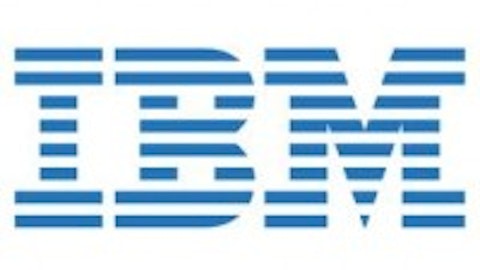Shares of surgical robot maker Intuitive Surgical, Inc. (NASDAQ:ISRG) plunged 16% on July 9, after the Sunnyvale, Calif.-based company warned that its second quarter revenue would come in below analyst estimates when it reports earnings on July 18.
It’s been a chaotic year for Intuitive Surgical, Inc. (NASDAQ:ISRG), which produces the da Vinci surgical robot that was once the darling of Wall Street. Despite rising 2,700% over the past decade, the da Vinci’s system’s real value has recently been questioned by several groups of doctors, who claim that it doesn’t offer any real advantages over traditional surgical methods.
Is Intuitive Surgical, Inc. (NASDAQ:ISRG)’s revenue warning a bleak signs of darker days ahead, or should investors buy the dip in hopes that the outlook for the da Vinci system will improve over the next few years?
Three main revenue streams
Intuitive Surgical, Inc. (NASDAQ:ISRG) generates its revenue from three main sources – sales of the da Vinci system, which costs $2 million, instruments and accessories for the system, and continual maintenance fees, which cost hospitals hundreds of thousands of dollars annually.
During the first quarter, instrument and accessory sales accounted for 43% of Intuitive Surgical, Inc. (NASDAQ:ISRG)’s top line. Sales of the da Vinci systems accounted for 42%, while service fees accounted for the remaining 15%. During the first quarter, sales of its accessories, systems and services rose 26%, 24% and 17%, respectively. In other words, the company was firing on all cylinders.
That’s the reason Intuitive Surgical, Inc. (NASDAQ:ISRG)’s preview of its second quarter revenue was so disappointing. The company now forecasts second quarter revenue to rise 7% year-on-year to $575 million, missing the Thomson Reuters’ consensus estimate of $629.6 million. Sales of da Vinci systems are expected to decline 6% to $215 million. However, sales of instruments and accessories, its largest segment, is forecast to rise 18% to $265 million. Net income is only expected to edge up 3.2% to $160 million.
The decline in demand for da Vinci’s core product raises serious concerns about the entire company’s business model and the sustainability of its accessories and services segments.
What does da Vinci do?
The da Vinci system allows surgeons to make microscopic incisions via robotically controlled arms that imitate a surgeon’s hand movements, making major operations more accurate and less invasive. Da Vinci is primarily used for urological and gynecological procedures, which account for 70% of its procedures. Doctors are currently experimenting with using the system in cardiothoracic and laparoscopic operations as well.
Although sales of the da Vinci robots declined during the quarter, total procedures using the system rose 18%, as usage in general surgeries offset a decline in gynecologic procedures. Gynecologic procedures declined due to insurers encouraging cheaper outpatient treatments. The overall effectiveness of the da Vinci system in hysterectomies has also been questioned by the Journal of the American Medical Association and the American Congress of Obstetricians and Gynecologists. The Journal noted that complication rates for robotic hysterectomies came in at 5.5%, slightly higher than the 5.3% rate for cheaper, traditional surgical methods.
Even though that report spooked many investors into believing that Intuitive Surgical’s core competency was now threatened, it’s important to note that the hospitals which own da Vinci systems installed are relying on them more than ever. This means that the company’s service and accessories revenue should continue to provide it with a steady cash flow.
Will the rise of the robots continue?
Intuitive Surgical enjoys a virtual monopoly in the market of robotic surgery. It successfully expanded out of a niche market and convinced healthcare providers that its technology could become mainstream in the future. However, the adoption of cutting-edge technologies faces a bumpy road ahead, as hospitals may hesitate to purchase high-priced systems in times of macroeconomic uncertainty. Let’s take a look at two other companies which may be affected by this trend.


